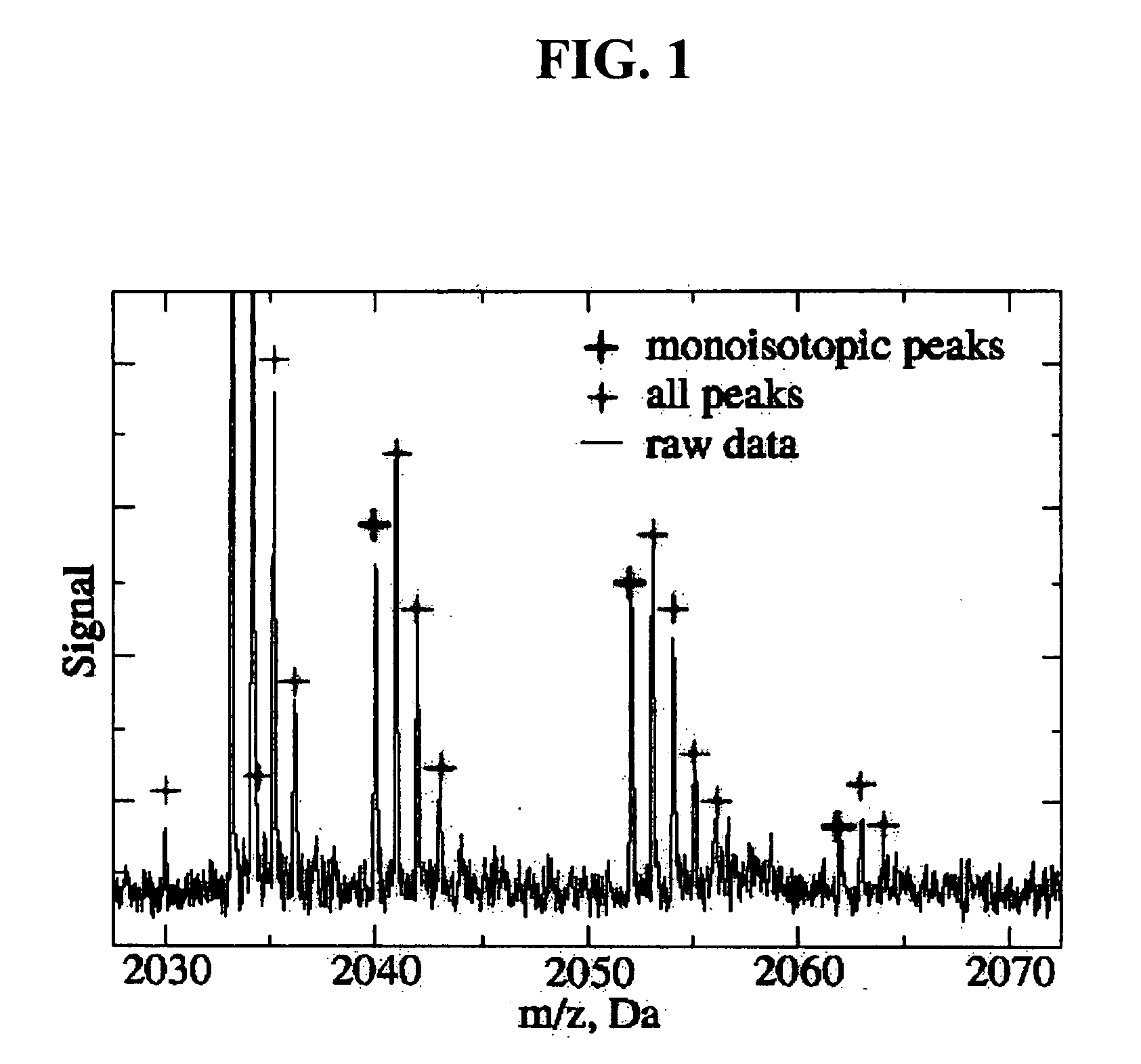Method to automatically identify peak and monoisotopic peaks in mass spectral data for biomolecular applications
a mass spectral data and automatic identification technology, applied in chemical methods analysis, instruments, material analysis, etc., can solve the problems of unsatisfactory performance of state-of-the-art software systems and algorithms for peak detection in mass spectral data, and inability to adjust, so as to improve the reliability and sensitivity of monoisotopic peak detection and accuracy of determination
- Summary
- Abstract
- Description
- Claims
- Application Information
AI Technical Summary
Benefits of technology
Problems solved by technology
Method used
Image
Examples
Embodiment Construction
[0019] In the following detailed description of the preferred embodiments, reference is made to the accompanying drawings, which form a part hereof and in which is shown by way of illustration specific preferred embodiments in which the invention may be practiced. These embodiments are described in sufficient detail to enable those skilled in the art to practice the invention, and it is understood that other embodiments may be utilized and that logical software, electrical, mechanical, structural, and chemical changes may be made without departing from the spirit or scope of the invention. To avoid detail not necessary to enable those skilled in the art to practice the invention, the description may omit certain information known to those skilled in the art. The following detailed description is, therefore, not to be taken in a limiting sense, and the scope of the present invention is defined only by the appended claims.
[0020] Peak Detection Algorithm
[0021] To make disclosed algor...
PUM
 Login to View More
Login to View More Abstract
Description
Claims
Application Information
 Login to View More
Login to View More - R&D
- Intellectual Property
- Life Sciences
- Materials
- Tech Scout
- Unparalleled Data Quality
- Higher Quality Content
- 60% Fewer Hallucinations
Browse by: Latest US Patents, China's latest patents, Technical Efficacy Thesaurus, Application Domain, Technology Topic, Popular Technical Reports.
© 2025 PatSnap. All rights reserved.Legal|Privacy policy|Modern Slavery Act Transparency Statement|Sitemap|About US| Contact US: help@patsnap.com

